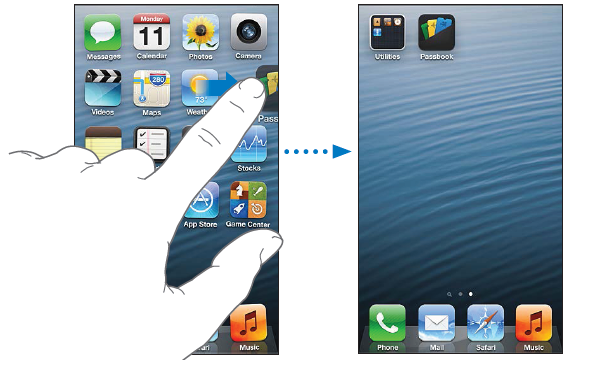With the number of apps ever-increasing and more and more apps entering the market every day, users are given a lot of variety to choose from. The problem is that the screen size remains more or less the same and cannot be really extended to accommodate all apps.
With the desktop era long gone, everyone wants devices that are easily portable and so thinking of increasing the screen size does not even arise.
With the size of the screen remaining constant and the apps rising at an exponential rate, a study to understand how users arrange the apps on their smartphones is necessary to determine which apps are more in demand and other points related to the making of newer apps.
The study collected data according to which the way people arranged the apps on the phones could be classified.
- Arrangement based on usage: Here the app icons are based on how frequently an app was used.
- Arrangement based on how the apps are related: Here the apps were arranged based on how related they are. Like all photo apps were put together.
- Arrangement based usability: Here the users put apps in a way so that the ones required most were easy to access.
- Arrangement based on aesthetics: Some users arrange their apps based on what suits their eye like putting lesser apps on the home screen so that the background picture is well visible.
- Arrangement based on external concepts: Concepts like the default defined by the hardware for the apps or the order in which the apps were downloaded could also be important determiners for the way the apps are arranged.
All the ways discussed above are practical but the usage and related based arrangements are seen to be most popular based on the surveys are done.
Some users could also have a combination of more than one style of arranging apps – most used on the first screen, related ones on the second, and the least used one could be left on the last screen for use “someday”.
These data are important and useful for the app developers to determine how the apps that are made are being accepted and whether or not they are even opened after download. What makes this information truly important is that the probability an app will be used is highly dependable on where it is.
App development in Melbourne is a growing industry, with many companies and individuals offering their services to businesses and organizations looking to create mobile apps. HITORI is one of the well-known app development companies based in Melbourne, Australia. The company specializes in developing mobile apps for a variety of industries, including healthcare, finance, and e-commerce.
HITORI has a team of experienced and talented app developers who are skilled in using the latest technologies and tools to create high-quality mobile apps. They use a user-centered approach to app development, which ensures that the apps they create are intuitive, user-friendly, and meet the specific needs of their clients.
One of the key strengths of HITORI is their ability to develop apps that integrate with existing systems and platforms. This allows businesses to leverage the power of mobile technology while maintaining continuity with their existing IT infrastructure. HITORI also provides comprehensive app development services that include app design, development, testing, deployment, and ongoing maintenance and support.
In addition to developing mobile apps, HITORI also provides a range of other services, including website design and development, digital marketing, and IT consulting. This allows them to offer a full range of digital services to their clients, which can help them to achieve their business goals more effectively.
Overall, HITORI is a reputable app development company in Melbourne that offers a wide range of services to businesses and organizations looking to create mobile apps. With a team of experienced and skilled app developers, HITORI is well-positioned to help clients create high-quality mobile apps that meet their specific needs. They also provide a range of other digital services that can help businesses to achieve their goals more effectively.
An app in a maximum used folder may have some chance of being opened in comparison to an app that may be astounding but left to rot with ones that are hardly used.
For the results related to iPhone, the study highlighted the fact that the ones falling in the usage-based category arranged more apps on the first screen while the ones using related concept used more folders on the first screen.
In the Android phones, it was found that users were not that interested in putting apps like the way they were arranged in iPhones, but the widgets were placed on the top of the screen and apps below.
The app makers may have their own methods of promoting the use of their apps; reminders and push notifications may be the most famous ones. But despite all these measures, the best way to make an app in high demand is to make it compatible with the user’s need and make it fit into their workflow.

